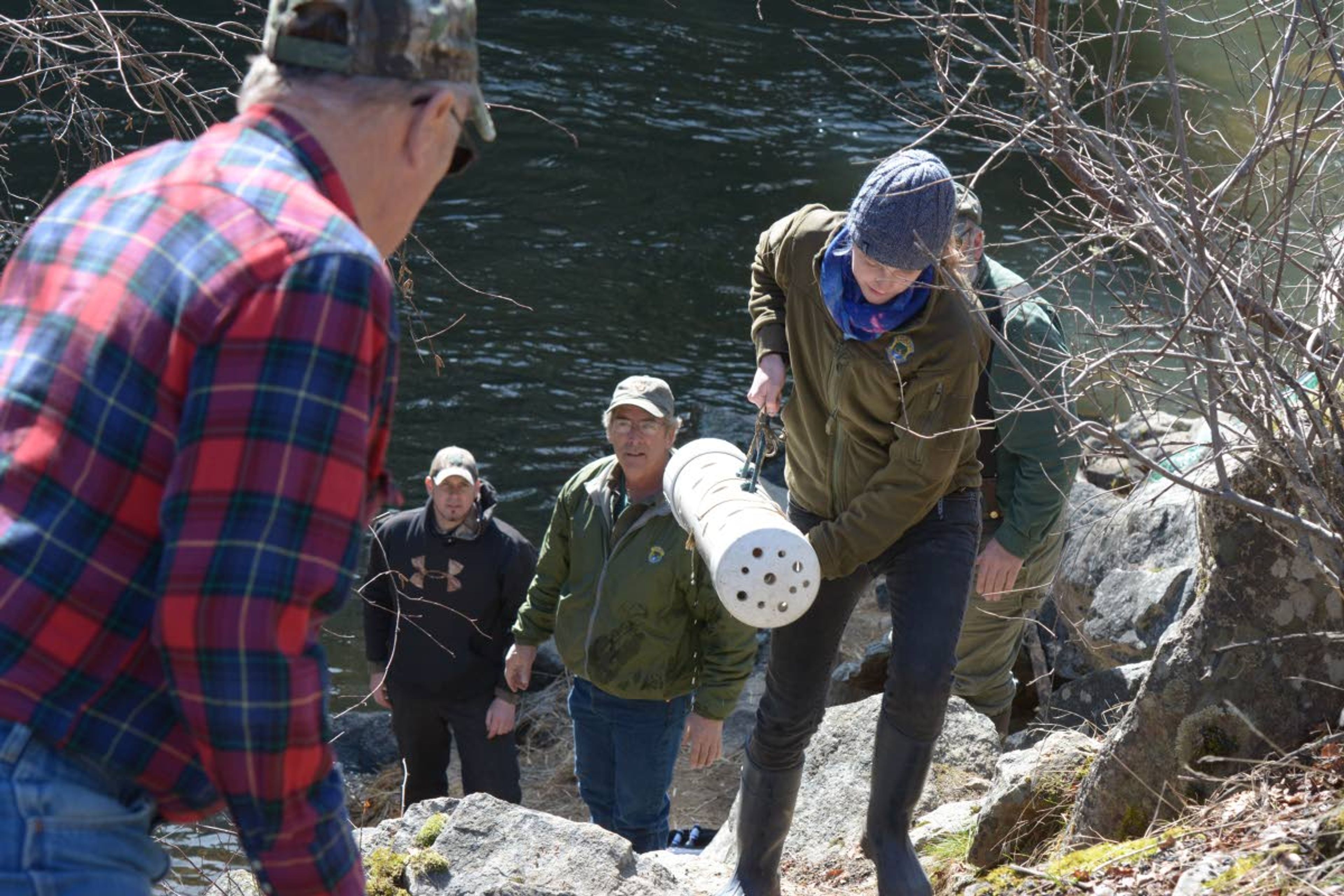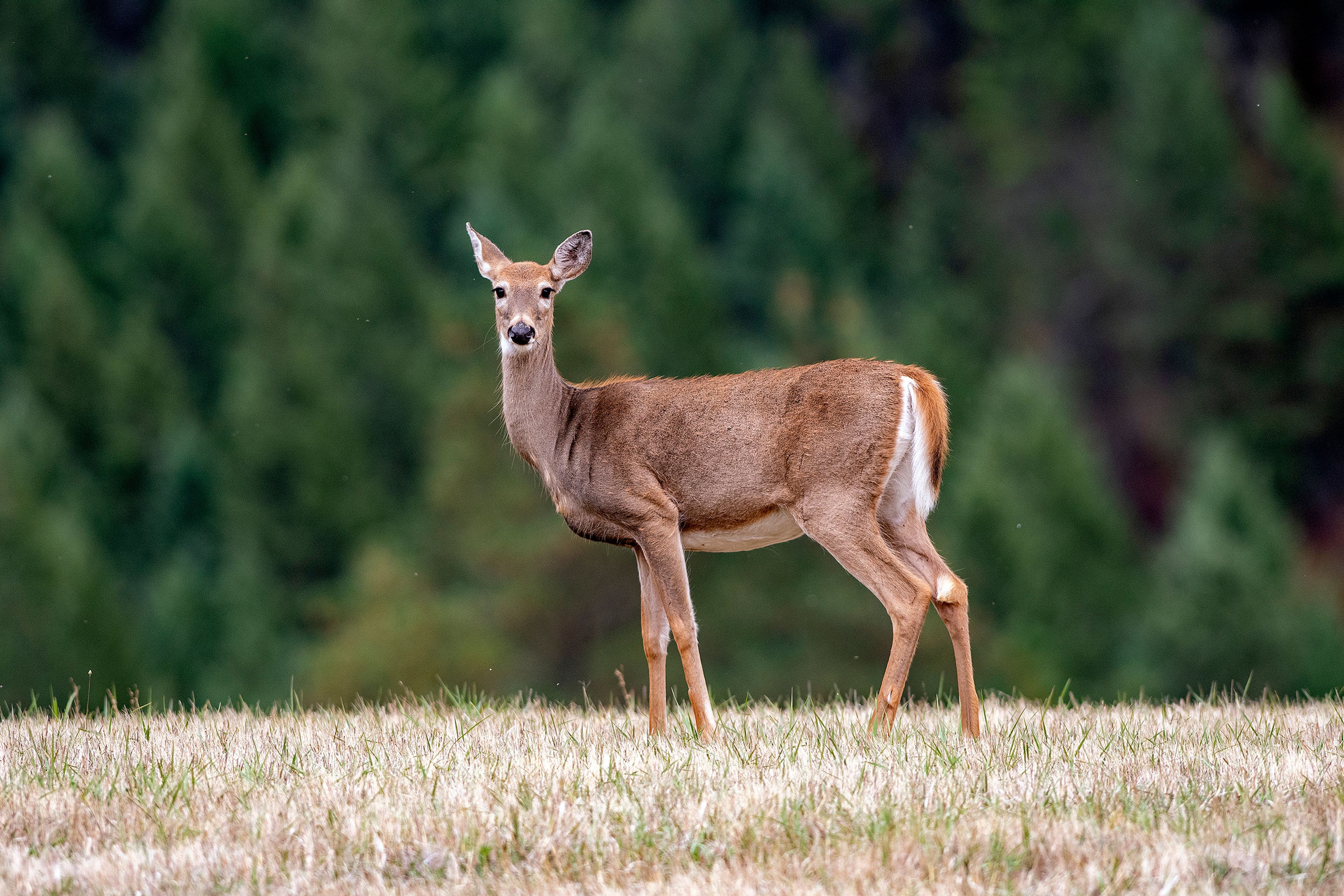‘Every fish counts’: Giving B-run a lift
Officials explore ways to collect Clearwater hatchery steelhead
Fisheries managers from Idaho and the Nez Perce Tribe will take an all-hands-on-deck approach in an effort to collect as many of the hatchery B-run steelhead returning to the Clearwater River as possible.
“Every fish counts,” said Becky Johnson, production manager for the tribe’s fisheries division.
This year’s steelhead run is dismally low, and officials from the state and tribe have said too few steelhead will return to Dworshak National Fish Hatchery to meet spawning goals. If spawning goals are not met, it could lead to lower returns in the future.
In response, all steelhead fishing was closed last month on the Clearwater River and the Snake River below Couse Creek. The tribe also closed its gill net fishing seasons on the lower Snake and Clearwater rivers.
Officials from the Idaho Department of Fish and Game and the tribe’s Department of Fisheries Resources Management anticipate deploying a number of tactics in an attempt to boost hatchery returns.
Most steelhead that return to Dworshak Hatchery are collected there in the spring, just before the fish begin to spawn. But the hatchery also opens its trap for short periods in the fall to ensure at least some of the steelhead used for spawning come from those that return earlier in the year. This year the trap at the hatchery will be operated throughout the fall and spring.
Steelhead bound for the Clearwater River also are being trapped at Lower Granite Dam. The dam has a trap that usually is used for research. This year the trap will target steelhead carrying tags that identify them as coming from hatcheries on the Clearwater River. Because not all steelhead are tagged, those operating the trap will also intercept as many large steelhead as possible. B-run steelhead generally spend two years in the ocean and are larger than A-run steelhead that return to other tributaries of the Snake River.
Johnson said fish that are 80 centimeters or longer (about 31.5 inches) will be targeted. Those trapped will be trucked to Dworshak Hatchery and held there. She said only those identified through genetic testing as coming from Clearwater River hatcheries will be spawned.
“We hope to get 200 to 400 fish (from the trap at Lower Granite),” she said.
Some of those fish may have made it to the hatchery on their own, but trapping and trucking them will ensure they do so.
“We get about a 60 percent conversion rate from Granite to the hatchery trap, so this is just ensuring we have the best possible chances of making brood stock,” Johnson said.
Joe DuPont, regional fisheries manager for the Idaho Department of Fish and Game at Lewiston, said the agency, in partnership with the tribe, is exploring other possible ways to collect hatchery steelhead that return to the South Fork of the Clearwater River. This year, more hatchery steelhead are projected to return to the South Fork than those that will return to Dworshak Hatchery. But there is no trap to collect the steelhead that swim up the South Fork.
DuPont said it’s possible a weir could be used to help boost collections. But weirs are tricky, especially on rivers like the South Fork that are prone to swings in flow rates or to freezing from cold temperatures.
“Just keeping a weir out there is a problem,” DuPont said.
Both the state and tribe are contemplating using anglers to collect hatchery steelhead that return to the South Fork of the Clearwater River. For the past several years, the Idaho Department of Fish and Game has enlisted anglers fishing on the South Fork to help collect steelhead for the hatchery. When anglers volunteering for the program catch steelhead, they put them in specially designed tubes that are placed in the shallows of the river. Holes in the tubes allow the fish to breathe as water flows through until they are placed in a tanker truck for transport to the hatchery.
If the program is deployed this spring, it will be the only opportunity for anglers to fish for steelhead on the South Fork or any part of the Clearwater.
Barker may be contacted at ebarker@lmtribune.com or at (208) 848-2273. Follow him on Twitter @ezebarker.










